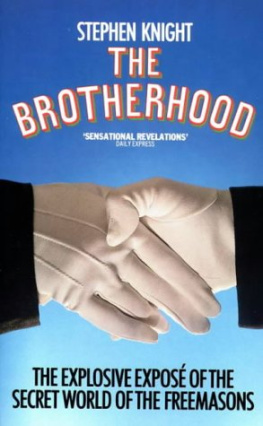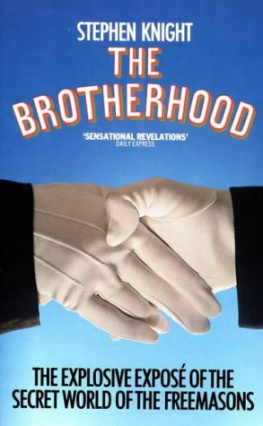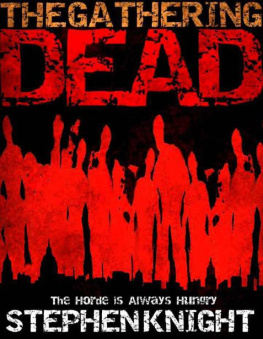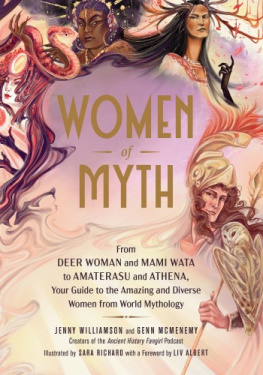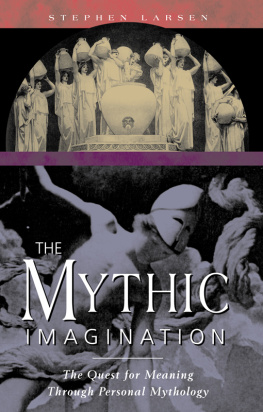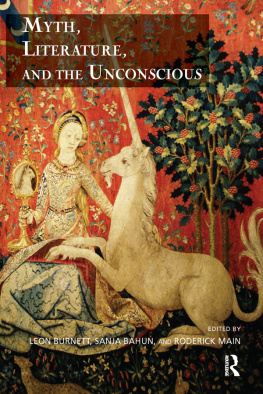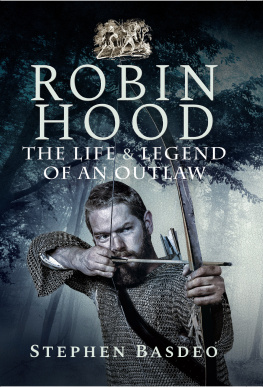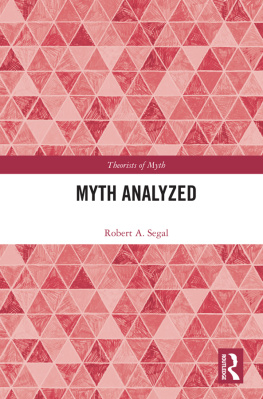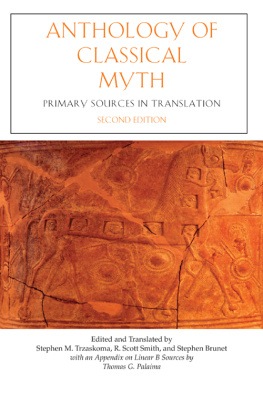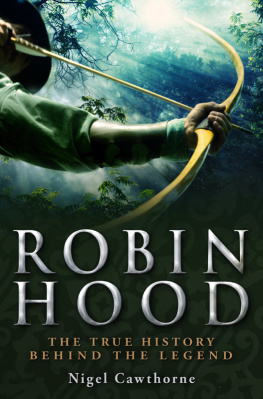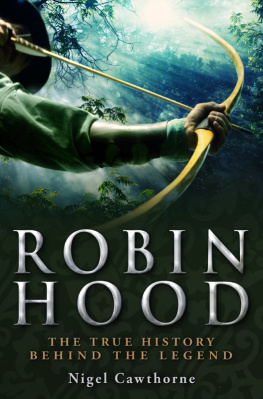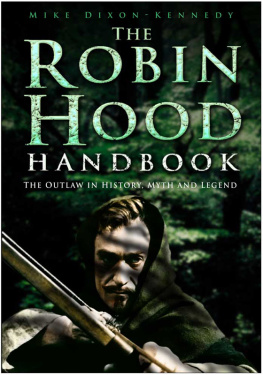Stephen Knight has worked as a professor of literature in Australia and Britain, focusing on the interrelationship of culture and society. He has written many books and essays, with major work on King Arthur, Merlin and Robin Hood, as well as international crime fiction. He is currently an honorary research professor at the University of Melbourne.
THE POLITICS
OF MYTH
STEPHEN KNIGHT

MELBOURNE UNIVERSITY PRESS
An imprint of Melbourne University Publishing Limited
1115 Argyle Place South, Carlton, Victoria 3053, Australia
mup-info@unimelb.edu.au
www.mup.com.au
First published 2015
Text Stephen Knight, 2015
Design and typography Melbourne University Publishing Limited, 2015
This book is copyright. Apart from any use permitted under the Copyright Act 1968 and subsequent amendments, no part may be reproduced, stored in a retrieval system or transmitted by any means or process whatsoever without the prior written permission of the publishers.
Every attempt has been made to locate the copyright holders for material and illustrations quoted and reproduced in this book. Any person or organisation that may have been overlooked or misattributed may contact the publisher.
: William Morris, Queen Guinevere (also known as La Belle Iseult), 1858, oil on canvas, 71.8 50.2 cm. Courtesy Tate Britain, London.
: Robin Hood: A High Spirited Tale of Adventure, Muppets Press and Random House, New York, 1980, front cover.
: Sidney Nolan, Ned Kelly, 1946, enamel paint on composition board, 90.8 121.5 cm. Courtesy National Gallery of Australia, Gift of Sunday Reed 1977.
: Merlin as stag visits Julius Caesar, Prophcies de Merlin, 1505, reprint of 1498 edition, half-page size. Courtesy the British Library.
Cover design by Handverk
Text design and typesetting by Cannon Typesetting
Printed in Australia by McPhersons Printing Group
National Library of Australia Cataloguing-in-Publication entry
Knight, Stephen, 1940, author.
The politics of myth: social meanings from King Arthur to Ned Kelly/Stephen Knight.
9780522868432 (paperback)
9780522868449 (ebook)
MythStructural analysis.
MythSocial aspects.
398.2
Contents
Preface
T HIS BOOK HAS been gathering itself together for a remarkably long time, in effect since I started teaching and researching on medieval literature at Sydney University in the 1960s, and Arthur and Guinevere and Merlin began to circulate in my head. Some years later I went on to develop that unheard of thinga course and a book in Robin Hood literature. Much of the underlying approach goes back to those years and to discussions with friends, especially that most scholarly and generous colleague, the late Bernard Martin. Work on crime fiction soon began, though that was not on campus, but in the more flexible context of adult education. After I moved to Melbourne University, studying Australian crime fiction brought Ned Kelly, and when at De Montfort University Leicester, in a new departure for me and the university, I became a Renaissance quasi-expert and the curiously matched pair of Queen Elizabeth and Shakespeare was brought into the frame. All that remained was to work on Jeanne dArc. In 2012, when I decided in retirement to try out the idea of the politics of myth at the newly formed but modally benign Melbourne Free University, she arrived, in part because I wanted a resistant woman to discuss but also because I had been writing about eighteenth-century medievalism, including Voltaires disgraceful treatment of her.
Those figures of myth are only a little more central to this study than friends and colleagues who have contributed directly and indirectly to this work as it has slowly formed and then recently more rapidly emerged. I would thank especially Maurizio Ascari, Justin Clemens, Paul English, Rob Gossedge, Tom Hahn, Becky Munford, Helen Phillips and Lucy Sussex, as well as recognising gratefully the usual and continuing family input of Margaret Knight, Elizabeth Knight and Sean Thompson, David Knight and Preslava Nenova.
I am very grateful for the support provided for this book by the generous award by Glyn Davis, Vice-Chancellor of the University of Melbourne, of a Fellowship in 201315. I have relied heavily on the expert assistance of staff in the universitys Baillieu Library, especially its outstanding interlibrary loan system. At Melbourne University Publishing, thanks are due to the publisher, Louise Adler, for her interest in the book, and to Sally Heath for her editorial work. Recognition and gratitude should also go to the art galleries and other picture sources indicated on the illustrations.
Stephen Knight
Melbourne, 2015
The Meaning of Myths
Myth
Myth is a word that faces two ways. If we want to disavow some assertion or allegation, we say it is just a myth, and feel we have trivialised it. But if some person or achievement is of remarkable quality or fame, we say they are mythic, beyond normal levels of excellence. The myths of a culture also have two evaluative positionsthey seem both distant and ethereal by not being bluntly realistic, but at the same time they are insistently present, and provide ways of thinking about the structures, values and human roles within the societies that live by and realise themselves through that culture. Myths, the learned mythographer Marina Warner writes, have a deep relation to our social and human concerns.
The study of myth and the practice of communicating myth have not always recognised its continuing contemporaneity. Many scholars prefer to ignore their own world and think and write about the past of long-disappeared cultures, or the slightly more recent myths of Greece and Rome. Hiding in antiquity can be more than just scholarly fantasy: for centuries the English gentleman was trained in the classics as a way of separating his class from the mundane reality of modernity, though there were meaningful, or at least wishful, contacts like the shared imperial ambitions of Rome and England. The Nazis, deeply hostile to modern European liberalism, recycled ancient Germanic lore as an even more aggressive false consciousness. JRR Tolkien, a major scholar of northern myth, was outraged at this degrading of the pantheon he admired, and in response created his own evaluative synthesis of Western myth, both aristocratic and popular, with added magic. Yet his work was read as a new escape from reality when The Lord of The Rings came out in paperback in the United States in 1965 and was welcomed in the youth world as disconnected whimsya reaction that led to the extraordinary growth of what was in its early stages called mythic fiction, now known in all its range, grotesquerie and solipsism as fantasy.
But if the world of sub-Tolkien fictions is inherently escapist, it is also strongly marked with figures who bear aspects of antique mythic and meaningful strengthGandalf the wise, if somewhat disconnected, man, Galadriel the austere but equally beautiful and generous Elf-Queen, Aragorn the tormented, ever-faithful fulfiller of a fated quest, Frodo the stubbornly brave and somehow surviving little man. They are versions of the grander, longer-lasting figures like those who are the subject of this book; foci of social and cultural significance who belong to Western European culture, unlike figures of distant world myth like elephant-men or Gog and Magog. Some of the figures discussed here arose in the medieval prologue to the present and others developed in early modern and even relatively recent periods. Most importantly, and so proving how central they subliminally are to changing social and cultural contexts, they have all kept on varying, as their core meanings are adapted to the circumstances and needs of the periods that recreate and use them to guide their feeling, thinking and decision-making.
Next page

